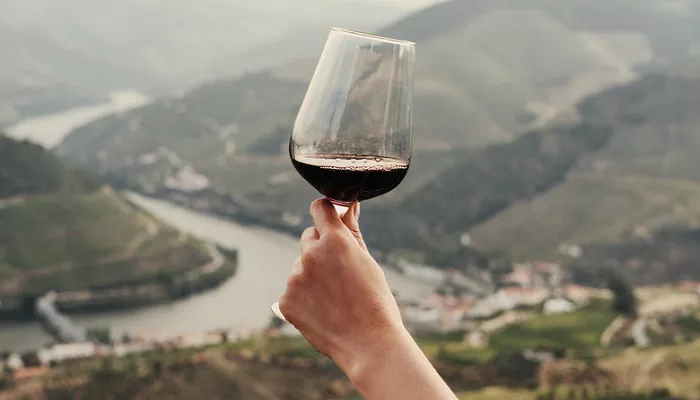The wine industry, much like the world of fashion, experiences evolving trends. While the 1990s favored sleek stainless steel wineries and meticulously manicured vineyards, the past decade and a half have seen a shift toward more natural, less controlled approaches. In winemaking, this has translated into a resurgence of old oak barrels and natural fermentations, while vineyards now embrace untamed vines, natural vegetation between rows, and minimal or zero chemical spraying. This movement reflects a growing desire among winemakers and growers to adopt low-intervention practices aimed at environmental preservation and a truer expression of terroir.
Despite these good intentions, the shift toward minimal intervention presents significant challenges. Classic grape varieties such as Pinot Noir, Chardonnay, and Nebbiolo, all vitis vinifera, are delicate and require careful attention. Their sensitivity makes low-intervention viticulture difficult, especially in marginal climates. The intensifying effects of climate change—marked by hotter and often wetter weather—have further complicated cultivation efforts.
In response, hybrid grape varieties are gaining traction as a practical alternative. Known as PiWis (from the German “Pilzwiderstandsfähig,” meaning fungus-resistant), hybrids are crosses between vitis vinifera and other grapevine species, typically vitis labrusca. While vitis labrusca grapes have less refined flavors, they bring greater resilience and disease resistance. The crossbreeding aims to combine the desirable taste and structure of vinifera grapes with the natural hardiness of other species, reducing the need for pesticides and herbicides.
It is important to distinguish hybrids from crossings between two vitis vinifera varieties, such as Pinotage (Cinsault x Pinot Noir) and Cabernet Sauvignon (Cabernet Franc x Sauvignon Blanc). Hybrids have a longer history but were historically associated with bulk wine production due to their resilience and ease of cultivation. This led to a negative reputation, especially in France, where government policies led to the near eradication of hybrids by the 1970s.
Today, however, hybrids are experiencing a renaissance driven by climate pressures, sustainable farming goals, and the emergence of new varieties. These grapes are used both in blends with classic varieties and as single varietal wines. Newer hybrids like red Cabernet Noir and white Souvignier Gris are gaining recognition, although vineyards planted with hybrids remain relatively young and small in scale. For example, PiWis currently account for just 3.5% of Germany’s vineyard area but are steadily expanding.
Interviews with winemakers highlight the growing enthusiasm for hybrids. Fabian, whose family pioneered organic winemaking in Baden, Germany, has gradually increased hybrid plantings since the 1990s. Today, hybrids comprise 20% of their vineyard, with expectations to reach 30-50%. Fabian emphasizes hybrids’ lower labor and chemical input requirements, along with their thick skins that confer resistance to diseases like oidium and botrytis. While tannin management remains a winemaking challenge, he praises varieties such as Johanniter and Souvignier Gris for their quality and vineyard health. However, Fabian acknowledges market acceptance remains the biggest hurdle, as traditional varieties continue to dominate consumer preferences.
In France’s southwest Occitanie region, Roman Tournier is transitioning from selling grapes to creating his own wines using hybrids. Witnessing the impacts of climate change firsthand, Roman values PiWis for their disease resistance and consistent yields, which reduce reliance on treatments and associated costs. He favors Souvignier Gris for its aromatic profile and balance and Cabernet Jura for its ripe fruit and acidity. Roman plans to blend hybrids with classic varieties initially to ease consumer acceptance but is confident hybrids represent the future for his region.
In the UK, Guillaume Lagger planted his entire Hampshire vineyard with hybrid varieties in 2021 after years of experimenting with both PiWis and vinifera grapes. His experience confirms hybrids’ dramatically lower spraying needs, often limited to minimal copper treatments, and their more reliable yields despite climatic variability. Guillaume cultivates nine hybrid varieties, including Souvignier Gris, Solaris, Divico, and Cabernet Noir. He notes that early ripening is common among hybrids, which suits the UK’s growing season. While winemaking techniques require adaptation—especially regarding tannin extraction—the potential of hybrids to expand in the market is promising.
As climate change intensifies and environmental considerations rise, hybrid grape varieties are emerging as vital tools in sustainable viticulture. While consumer familiarity remains a challenge, the industry’s increasing adoption and successful cultivation of PiWis suggest these resilient grapes may soon take their place alongside traditional varieties on wine shelves worldwide.
You Might Be Interested In:


